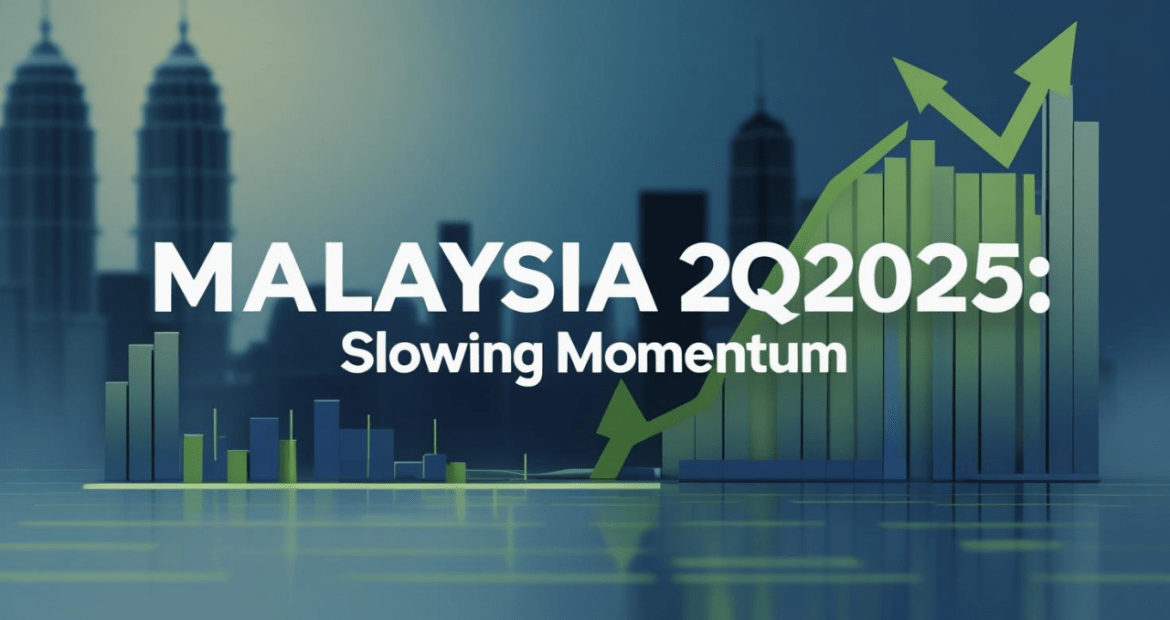21 July 2025
SUMMARY
➤ Malaysia economy grew 4.5% year‑on‑year (YoY) in 2Q2025 in preliminary estimate, outpacing 1Q2025 of 4.4% YoY, as domestic demand remained resilient. Conversely, trade surplus narrowed significantly by 55.3% to RM14.48 billion in 2Q2025.
➤ Opus projects Malaysia’s 2025 economic growth to fall within the range of 3.5–4.5%, with steady inflation and trade performance hinging on US negotiations and sector-specific tariffs.
➤ The local bond market is expected to remain steady on the back of resilient macroeconomic conditions, steady currency movement, and sustained net inflows of foreign investment
➤ Hence, we are maintaining our investment strategy of portfolio duration within 5 – 7 years with overweight exposure in high grade corporate bonds to minimize credit downgrade risk in slowing growth environment. We also look to enhance the returns of the portfolio through active trading in the secondary market.
- Malaysia economy expanded by 4.5% year‑on‑year (YoY) in 2Q2025 in preliminary estimate, outpacing 1Q2025’s 4.4% YoY growth and slightly surpassing market estimates of 4.2%. According to the Department of Statistics Malaysia (DOSM), domestic consumption remained the key driver, supported by public sector wage hikes, school holidays, and festive spending. Stable labour market, low inflation and cash assistance programmes also provided cushion to private consumption during the quarter.
- On the sectoral front, most industries continued to expand, except for mining. Manufacturing showed steady growth of 3.8% YoY, supported by resilient exports and increased production capacity. The services sector also ticked upward by 5.3% YoY, driven by robust domestic demand, a rebound in tourism, and increased activity in finance and professional services. The construction sector continued to post double-digit growth at 11% YoY but moderated for two consecutive quarters. Conversely, the mining sector remained weak, contracting by 7.4% YoY due to lower output in oil and gas extraction. Overall, these mixed sector performances shaped moderate but stable GDP growth in the quarter.

- Despite the solid GDP, external trade showed signs of strain. Trade surplus in 2Q2025 narrowed sharply by -55.3% to RM14.48 billion from RM41.04 billion, with imports rising more than exports. For June, weaker regional demand and post-front-loading trade normalization have led to softer trade activity. Exports fell -3.5% YoY in June (May’25: -1.2% YoY), weighed down by lower shipments of manufacturing and mining goods. Similarly, import growth slowed significantly to 1.2% YoY in June (May’25: 6.6%).

- Looking ahead, Malaysia’s economic outlook remains cautiously optimistic, supported by resilient domestic demand and a stable labour market. According to the DOSM, continued improvements in employment, wages, and consumer spending are expected to underpin growth in the second half of 2025. However, external headwinds, including subdued global trade, geopolitical tensions, and lingering uncertainties in key export markets, may weigh on overall momentum.
BOND MARKET OUTLOOK AND OPUS VIEW
- Opus projects Malaysia’s annual GDP growth to fall within the range of 3.5-4.5% (Bloomberg consensus: 4.2%), factoring in a slower global economic momentum and tariff barriers. Inflation for 2025 may remain steady and fall within a manageable range as widely expected, with impacts from the Sales and Service Tax (SST) and electricity tariff restructuring to emerge in the later of 3Q2025 due to delayed cost-pass through effect. Trade performance may continue to soften with developments likely to hinge on the trade negotiations outcome with the US by 1 Aug’25 as well as the sector-specific tariff details.
- Meanwhile, the local bond market is expected to remain steady on the back of resilient macroeconomic conditions, steady currency movement, and sustained net inflows of foreign investment. The July OPR cut is expected to redirect more deposits to the capital market, with bond market gaining advantage as local equity market underperformed on global uncertainties. However, the lower government bond supply may offset the gain due to yield compression.
- Hence, we aim to focus on investment strategy of portfolio duration within 5 – 7 years with overweight exposure in high quality corporate bond to mitigate downgrade risk. We also look to trade opportunistically in the secondary market to enhance the portfolio overall returns.
Disclaimer
The information, analysis and opinions expressed herein are for general information only and are not intended to provide specific advice or recommendations for any individual entity. Individual investors should contact their own licensed financial professional advisor to determine the most appropriate investment options. This material contains the opinions of the manager, based on assumptions or market conditions and such opinions are subject to change without notice. This material has been distributed for informational purposes only and should not be considered as investment advice or a recommendation of any particular security, strategy or investment product. Information provided herein may include data or opinion that has been obtained from, or is based on, sources believed to be reliable, but is not guaranteed as to the accuracy or completeness of the information. No part of this material may be reproduced in any form, or referred to in any other publication, without express written permission. Opus Asset Management Sdn Bhd and its employees accept no liability whatsoever with respect to the use of this material or its contents.






